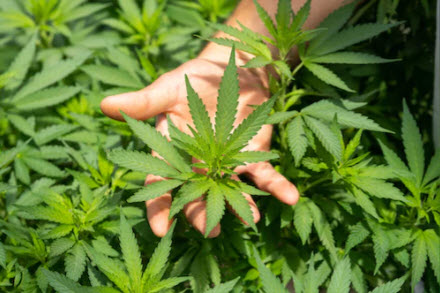There has never been a more important time for the cannabis industry itself to support a vibrant, constructively critical media. Investors and consumers should demand it
There was a time, not so long ago, when writing about the cannabis industry was not only rare, but instantly suspect unless one was critical of it – namely being against normalization. Indeed, when I started covering the North American industry, from Germany, in 2014, one of the reasons I got employment from the US was that there were so few experienced, much less business journalists willing to write about the industry in a positive way – not to mention with any credibility. Being supportive of cannabis reform was, in and of itself, considered “unbalanced” by most of the mainstream media.
Fast forward eight years and things have certainly changed – even as they haven’t.
There are certainly more outlets which cover cannabis – and indeed not only specialize in it – but, on the mainstream side of this, which have created whole themed sub verticals. Benzinga and Forbes are just two examples – although such coverage has been very much in a similar vein to The Street, which was to my knowledge, the first mainstream news outlet (even if business focussed) to create such a vertical. Indeed, I started writing for them in the early spring of 2014, as well as wrote my first book on the industry, from a tiny town in the northwest of Germany, called Dortmund.
Of course, it was not just unusual in the US. In Dortmund it was so rare to have a (female) “foreign” journalist openly admitting to writing about the industry, and further doing so from a part of town long associated with students and immigrants (and drug busts), that the polizei came to pay me a visit.
Types of Cannabis Coverage
Coverage of the industry is something that is certainly changing. Today, there are a plethora of outlets (although thanks to recent mergers and acquisitions, a few less than there were). That said, for the most part the coverage falls into one of a few buckets.
- News about legalization frontiers and advances in cannabis normalization. This is obviously important. How one writes about this, however, should be put in some kind of context. Current markets all face a multitude of issues that are not covered nearly regularly enough. New markets are fabulous, but they require different entry strategies, and are far from the same.
- Cannabis stocks. This was one of the earliest parts of the “business” to be covered on a regular basis – even when in penny stock territory. That said, most of this analysis is based on short term developments (see opening markets and legalization), if not looks at the world informed on a quarterly basis and is still remarkably uninformed about real issues. If not festering problems. Valuations is one big place this is an issue, although far from the only one. Here is why, however, which is directly connected to the pace of legalization and localization. Using “multipliers” from somewhere else to value an opening market, not to mention a future recreational one, is a fool’s game. This is very clear, as a specific example, when applying the “lessons” of either North American market to the German or European one.
- Cannabis Business Coverage. When not about reform or regulatory challenges, this kind of coverage is either about the specific progression of one company (usually seeded by a corporate press release) or the performance of its stock. This is, as a result, some of the most misleading and frequently inaccurate coverage of all – simply because company news is reported uncritically by industry fans or those who are sponsored by large companies who specifically do not want any kind of critical coverage. This is also the realm of planted stories by publicists hoping to feature the bon mots of company execs hoping to drum up personal or corporate publicity, usually in the middle of a fundraising spree.
- Medical Advances. This is a place where cannabis science is still being debated. Positive news about studies and cannabinoids, however, still mixes with “news” about the negative health impacts of using the plant at all – usually cast in the perspective of drug addiction, teen users, expectant mothers, or those who use and drive.
- Features. This is where a great deal of “lifestyle” coverage falls. It is fluff, but that is partly the fun of it.
- Investigative reporting. This is still in its infancy, just because the industry is still so new. It starts with being pro industry and supportive of cannabis reform, and understanding that nothing is easy about this vertical, much less being compliant with regulations. It is hard for everyone. It is also, just like this brand of information elsewhere, frequently difficult to do because most corporate cannabis backers are not fans, and smaller companies do not have the budgets, or do not think they do, to support the same. The most damning investigative report on the developing industry so far, as a result, has come not from “regular” journalists, but financial analysts (see the Aphria Report circa late 2018). CannTrust was brought down not by any Canadian press coverage, but an internal whistle-blower. Juicy Fields was first reported by the mainstream, Spanish language press – not the cannabis, English-language specialty one.
“Bad” News and Constructive Criticism
Both investors and consumers need to have a fully rounded understanding of this industry – which is still, if nothing, mostly opaque to those who do not spend their lives in it. As a result, this also includes the mainstream press, who have other beats and come to the vertical occasionally.
Being “critical” in this context, is far from a “hit job.” Indeed, it is critical for an industry in development that advocates for safe products if not profits support a “free” press to constantly question everything. This is even more especially true in an environment where too many of the larger players have (or have had) practices which are deeply disturbing (from toxic pesticide use to labelling problems if not creative accounting and valuations that have nothing to do with reality). It is also critical in holding reforming governments to task.
However, this is where, at least so far, the industry press has largely failed. There have been few journalists, mostly those in the industry but sometimes those outside of it too, who are able to withstand the attacks of corporate cannabis itself.
This summer there has been a new opening to do this as two of the largest Canadian public companies announced write downs and large losses and the American industry begins to prepare itself for federal legalization as well as looks abroad to Europe (starting with the German market) with new interest.
It does not eliminate all of the hazards of doing so, however.
Corporate Cannabis Attacks Need to Stop
One thing is constant. The attacks and threats on journalists, or even shunning of them, beyond underhanded attacks on ethical companies, who question the terminally sunny view of corporate behaviour within the context of legalization, has not stopped. Indeed, there are indications that it is increasing – even as more experienced journalists, podcasters and publications begin to stand up to the same and smaller companies increasingly fight for their continued participation in the larger industry.
On the positive side? Bad behaviour by companies is increasingly being reported, even if it has to find alternative outlets to even the “name” cannabis media publications. It rarely lasts that way for long anyway, depending on the size of the scandal.
There is one reason for this kind of menacing, hostile behaviour. Larger cannabis companies have gotten that way by using highly ruthless, even if effective on a short-term basis, tactics, which are increasingly backfiring. This includes everything from attacking “activists” – if not even more tragically, patients – and smaller companies directly, to working with anti-cannabis reform legislators to deliberately slow down normalization. However strange this may seem there is a strategic reason if not odious one for doing so. Namely, this kind of “advocacy” makes market entry even of the regulated kind, prohibitively impossible for most. One of the most spectacular examples of the same was in fact the German cultivation bid. At one-point, German companies were prohibited from even submitting a proposal (or if they did, instantly disqualified).
This is really tragic.
The reality is that this industry has been built if not on patients and “mom and pop” companies, then the vast majority of smaller businesses (if not patient collectives beyond that) which grow the plant, test the plant, and distribute if not sell the plant and its products for prices that are not hemispheric.
As investors are losing money by only backing the big guys, perhaps this is a watershed moment where an unfortunate period in the plant’s legalization history is starting to come to an end. The most newsworthy M&A of a German distributor this summer was actually questioned by the sole German cultivator in the country with a contract with the German government for cultivation.
In the meantime, the temperature if not most dominant feature of the industry is churn – everywhere – from the American multi-state operators to the Canadian federally legalized recreational one, and beyond this, the German pharma specialist sector as it leans towards recreational reform.
No one company has all the answers, and nobody is above constructive criticism. Right now, the industry needs to look at itself honestly, as the next doors open. Otherwise almost everyone will suffer. This includes, beyond patients, recreational consumers and smaller companies, no matter how paradoxically, the larger companies themselves too. It also includes investors as well as legalizing countries.
Nobody wins when a revolution of this magnitude is stunted if not tripped up by bad behaviour.
Journalists are a critical part of this process. Particularly ones who support the industry, or as I do, also work within the business, albeit doing other things. Beyond this, it is critical to make space for those whose writing and analysis looks at the parts that need improving while supporting the growth of a strong, compliant, diverse, and profitable overall industry itself.









